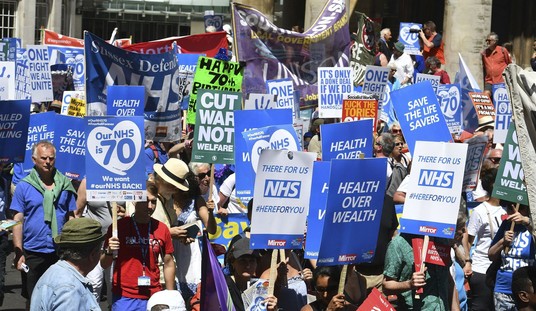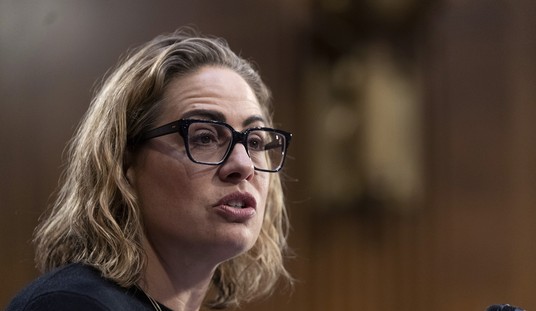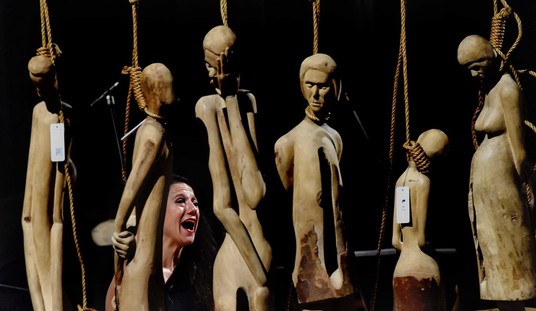And quite a few others, as it turns out. After his arrest, word got out about Julian Assange’s influence and control at Ecuador’s embassy in the UK, but a report from a probe ordered by its government shows his power at times exceeded that of the ambassadors. Surveillance reports and analysis acquired by CNN from the probe confirm some of the allegations made by US intelligence and Robert Mueller’s investigation into Russian interference in the 2016 election as well:
The surveillance reports also describe how Assange turned the embassy into a command center and orchestrated a series of damaging disclosures that rocked the 2016 presidential campaign in the United States.
Despite being confined to the embassy while seeking safe passage to Ecuador, Assange met with Russians and world-class hackers at critical moments, frequently for hours at a time. He also acquired powerful new computing and network hardware to facilitate data transfers just weeks before WikiLeaks received hacked materials from Russian operatives. …
The security logs noted that Assange personally managed some of the releases “directly from the embassy” where he lived for nearly seven years. After the election, the private security company prepared an assessment of Assange’s allegiances. That report, which included open-source information, concluded there was “no doubt that there is evidence” that Assange had ties to Russian intelligence agencies.
CNN notes that the authenticity of the report has been confirmed by an Ecuadorian intelligence official. If that openness seems a bit strange, a read of the article gives plenty of reasons for Ecuadorian officials to stick it to Assange now that he’s gone. Some of the stranger behavior, such as smearing feces on walls, has been alleged earlier. This report details less bizarre but unbelievably entitled behavior, thanks to his political connections to an Ecuadorian administration that was overtly hostile to the US.
Most importantly, Assange was able to operate Wikileaks without much interference from the embassy staff during his years-long stay. The Ecuadorian government allowed Assange to get visitors in and out without being identified or searched, and to edit the visitor logs as needed to operate secretly. When one ambassador attempted to revoke those privileges, Assange got on the phone with officials in Quito, who forced the ambassador to reverse the order.
However, the biggest part of the story is what connects the records to US intelligence conclusions. Assange used his pull to create this fiefdom in order to get access to some very interesting people. By June 2016, his operation had taken aim at the US election, with a little help from Assange’s friends:
Assange was busy back at the embassy. That month, members of the security team worked overtime to handle at least 75 visits to Assange, nearly double the monthly average of visits logged by the security company that year. He met Russian citizens and a hacker later flagged in the Mueller report as a potential courier for emails stolen from the Democrats.
Also in June, WikiLeaks secretly communicated with Russian hackers and Assange publicly announced plans to release new material about Clinton. The Mueller report says the Russian hackers obscured their identities by using online personas for all their communications with WikiLeaks, which included emails and direct messages to WikiLeaks’ account on Twitter.
Assange took at least seven meetings that month with Russians and others with Kremlin ties, according to the visitor logs.
Small wonder, then, that the US intelligence community made the connection. Given Assange’s role in the leaks of diplomatic cables earlier, the CIA and other agencies had to have their eye on Assange, and since he was stuck in the embassy, it would have been easy to keep that eye fixed on who was going in and out. Those observations would have been difficult to make public, in terms of protecting sources and methods. However, the Ecuadorians have little concern over that since it all took place in their embassy anyway.
This report, assuming it can be independently authenticated in a US court, might give prosecutors a good way to avoid exposing American spycraft in a trial. That assumes Assange will get extradited to face prosecutors in the first place, but it’s looking like a strong possibility. As long as the Department of Justice declines to seek the death penalty, the UK appears content to send him our way.








Join the conversation as a VIP Member